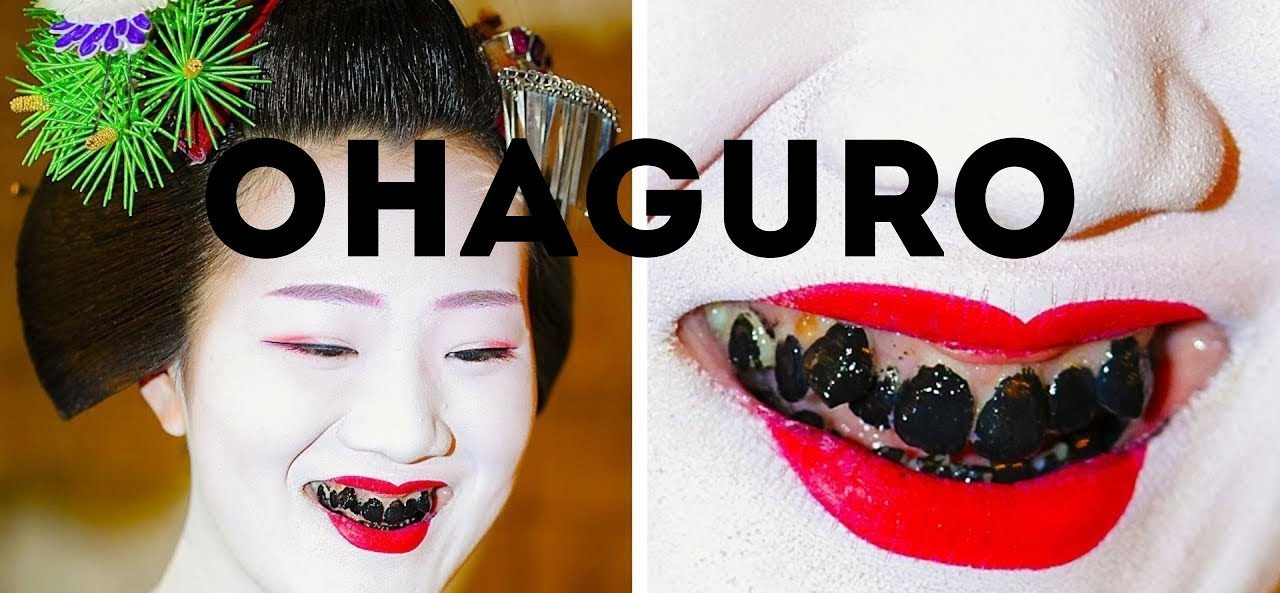Ohaguro

In the rich tapestry of Japan’s cultural heritage, there are customs and traditions that have endured through centuries, offering glimpses into the country’s intricate past. One such tradition is Ohaguro, the ancient practice of tooth blackening. Spanning centuries, Ohaguro holds a significant place in Japanese history, reflecting societal norms, beauty standards, and even spiritual beliefs. This article delves into the origins, evolution, cultural significance, and eventual decline of Ohaguro.
Table of Contents
ToggleOrigins and Evolution:
The roots of Ohaguro can be traced back to ancient Japan, with its earliest records dating as far back as the Kofun period (300-600 AD). Initially practiced by aristocrats and members of the imperial court, Ohaguro was regarded as a symbol of beauty, status, and maturity. It was believed to enhance facial features, particularly in women, and was associated with notions of elegance and refinement.
The practice involved staining one’s teeth black using a solution made from iron filings, vinegar, and other ingredients. This process, known as kanemizu, produced a distinct black coloration on the teeth, which was considered aesthetically pleasing in Japanese society. Ohaguro gradually became ingrained in Japanese culture, spreading across different social classes over the centuries.
Cultural Significance:
Ohaguro was not merely a cosmetic practice; it held deep cultural significance in Japanese society. In addition to its beauty-enhancing effects, Ohaguro symbolized rites of passage, particularly in marriage customs. Brides would undergo Ohaguro as part of their wedding preparations, signifying their transition into adulthood and marital commitment.
Moreover, Ohaguro was associated with notions of purity and hygiene. In a time when dental hygiene practices were rudimentary, the blackening of teeth served a practical purpose by protecting against tooth decay and promoting oral health—a fact often overlooked amidst its aesthetic appeal.
Spiritual Beliefs:
Beyond its cultural and aesthetic implications, Ohaguro was also intertwined with spiritual beliefs. In traditional Japanese folklore, it was believed that black teeth protected individuals from evil spirits and malevolent forces. The blackened teeth were thought to ward off demons and bring good luck and prosperity to the wearer. Thus, Ohaguro was not only a physical adornment but also a spiritual safeguard in ancient Japan.
Decline and Modern Perspectives:
Despite its deep-rooted cultural significance, the practice of Ohaguro gradually declined with the advent of modernization and Western influence in Japan. As Japan opened up to the world in the late 19th and early 20th centuries, Western beauty standards began to infiltrate Japanese society, leading to a shift away from traditional practices like Ohaguro.
Additionally, advancements in dental hygiene and the spread of Western-style dentistry rendered Ohaguro obsolete from a practical standpoint. As Japan embraced modern oral care practices, the once-popular tradition of tooth blackening faded into obscurity, preserved only in historical records and cultural artifacts.
In contemporary Japan, Ohaguro survives primarily as a cultural relic, celebrated during traditional festivals and theatrical performances that showcase Japan’s rich cultural heritage. While the practice itself has largely disappeared, its legacy endures in various forms, reminding us of the intricate tapestry of Japan’s cultural identity.
Conclusion:
Ohaguro, the ancient art of Japanese tooth blackening, offers a fascinating glimpse into Japan’s cultural history and traditions. Originating in antiquity, this practice evolved over centuries, reflecting societal norms, beauty ideals, and spiritual beliefs. While Ohaguro has largely faded into the annals of history, its legacy persists in Japan’s cultural heritage, serving as a reminder of the rich tapestry of traditions that have shaped the country’s identity over the centuries. As we reflect on Ohaguro, we gain a deeper appreciation for the complexities of Japanese culture and the enduring significance of its timeless traditions.
